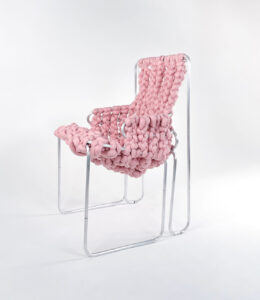As we continue to tour the public spaces at Optima® communities to highlight the curated collection of Modernist furnishings, such as the Eames chair, or tulip table, etc. We find it just as important to highlight recent advances of Modernist furniture design, propelled forward by the likes of Eero Saarinen, Charles and Ray Eames, Florence Knoll, and so many other masters of design. Today we introduce you to the OPERA chair at Optima Lakeview®, by SOFTLINE.
Brief History
SOFTLINE has been creating and producing innovatively designed furniture for a global market since 1979. The enterprise was founded as a division of K. Balling-Engelsen A/S, a Danish producer of technical polyurethane foam. For decades, this high-quality, flexible foam has been the material of choice for furniture production due to its unique properties.
In 2003, they became an independent, privately-owned enterprise with a factory in Denmark, where the upholstery is performed by hand, based on Scandinavian traditions and utilizing eco-friendly materials.

OPERA
The OPERA chair designed by Busk+Herzog serves a symphony of possibilities at Optima Lakeview® in its ability to elegantly blend modern and contemporary styles. From its high armrests, to provide privacy for all matters of which you may want to hide, to its backrest and cushion that completely envelopes your body.
The OPERA can also be used as a versatile lounge chair in larger configurations, much like PLANET, or in smaller configurations like PIERCE. Both of these elegant iterations can be found together just steps away at Optima Kierland® in Scottsdale. The OPERA chair provides a human-scale sense of privacy, as well as a space for contemplation or conversation in our business center. This striking piece is the perfect place for our residents to relax in solitude without being completely separated from friends, and we’re delighted to include this iconic design to Optima’s® Modernist collection!







